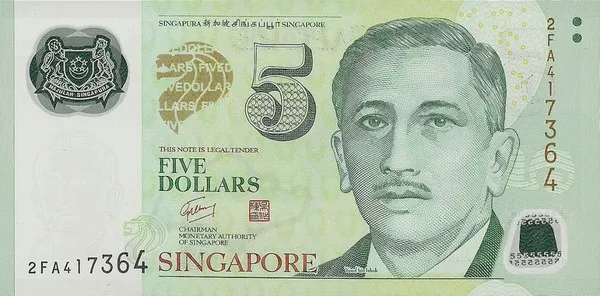As a global financial hub and one of the world’s leading economies, Singapore boasts a robust financial system that includes its own unique currency. The currency of Singapore plays a crucial role in facilitating trade, commerce, and economic growth within the country and beyond. In this article, we will explore the fascinating aspects of Singapore’s currency, including its history, design, security features, monetary policies, and its significance in the global financial landscape.
1. Historical Background:
The journey of Singapore’s currency can be traced back to its colonial past. Prior to independence in 1965, Singapore was part of the Straits Settlements, which used the Indian rupee as its official currency. However, after gaining self-governance, Singapore adopted a series of transitional currencies before eventually establishing its own distinct currency.
2. The Singapore Dollar (SGD):
The official currency of Singapore is the Singapore dollar, denoted by the currency code SGD. The Monetary Authority of Singapore (MAS) governs the issuance and circulation of SGD. Introduced on April 7, 1967, the Singapore dollar replaced the Malaysian dollar at par, following Singapore’s separation from Malaysia.
3. Design and Denominations:
The Singapore dollar features a range of visually appealing banknotes and coins. The banknotes come in denominations of $2, $5, $10, $50, $100, $500, and $1,000, while the coins are available in values of 1 cent, 5 cents, 10 cents, 20 cents, 50 cents, and $1. Each denomination showcases unique designs, iconic landmarks, historical figures, or significant cultural symbols that represent Singapore’s rich heritage.
4. Security Features:
Singapore takes pride in implementing cutting-edge security features to safeguard its currency against counterfeiting. The banknotes employ advanced technologies such as watermarking, security threads, color-changing ink, and microprinting. Additionally, the Monetary Authority of Singapore frequently updates the security features to stay ahead of counterfeiters.
5. Monetary Policy:
The monetary policy of Singapore is managed by the Monetary Authority of Singapore (MAS). The MAS utilizes a unique approach known as the Managed Float Exchange Rate System, which allows the Singapore dollar to fluctuate within an undisclosed policy band against a basket of currencies. This flexible exchange rate regime helps Singapore maintain price stability and competitiveness in international trade.
6. Exchange Rates:
The exchange rate of the Singapore dollar can vary against other major currencies due to market forces. Singapore has a well-developed foreign exchange market, and the exchange rates are determined by supply and demand dynamics. Travelers and businesses can easily convert SGD into various foreign currencies at authorized money changers, banks, or through digital platforms.
7. International Significance:
Singapore’s currency plays a significant role in global finance. The Singapore dollar is widely accepted for international transactions, particularly in Southeast Asia. It is also used as a reserve currency by central banks, indicating its stability and credibility. Moreover, Singapore’s financial institutions facilitate foreign exchange services, contributing to the city-state’s status as a major financial hub.
8. Cashless Transactions:
Like many technologically advanced nations, Singapore has embraced cashless payment systems. The country has witnessed remarkable growth in electronic payments, including mobile wallets, contactless cards, and online banking. The government actively promotes digital payments, aiming to create a more efficient and secure financial ecosystem.
9. Commemorative Coins and Banknotes:
To celebrate important milestones or events, Singapore occasionally releases commemorative coins and banknotes. These limited-edition collectibles feature unique designs and hold sentimental value for both locals and collectors worldwide. Such releases reflect Singapore’s commitment to promoting its cultural heritage and national achievements.
10. Future Outlook:
As technology continues to reshape the global financial landscape, Singapore remains at the forefront of innovation. The country has been exploring the potential of digital currencies and blockchain technology, with initiatives such as Project Ubin. These developments may shape the future of Singapore’s currency and pave the way for more efficient and inclusive financial systems.
Conclusion:
The Singapore dollar stands as a testament to Singapore’s remarkable economic growth, stability, and commitment to excellence in its financial system. From its rich history to the intricate security features, the Singapore dollar reflects the nation’s cultural heritage and achievements. As Singapore continues to evolve as a global financial hub, its currency will undoubtedly play a pivotal role in shaping the country’s economic trajectory and strengthening its position on the international stage.


